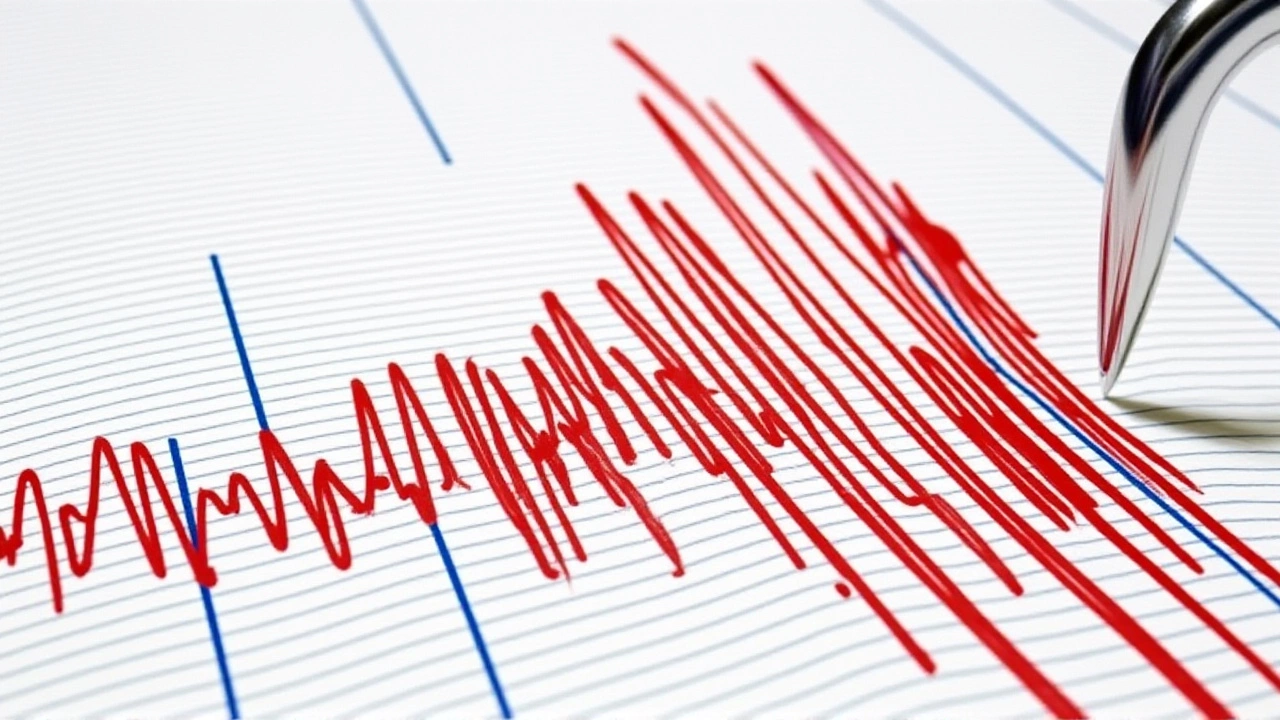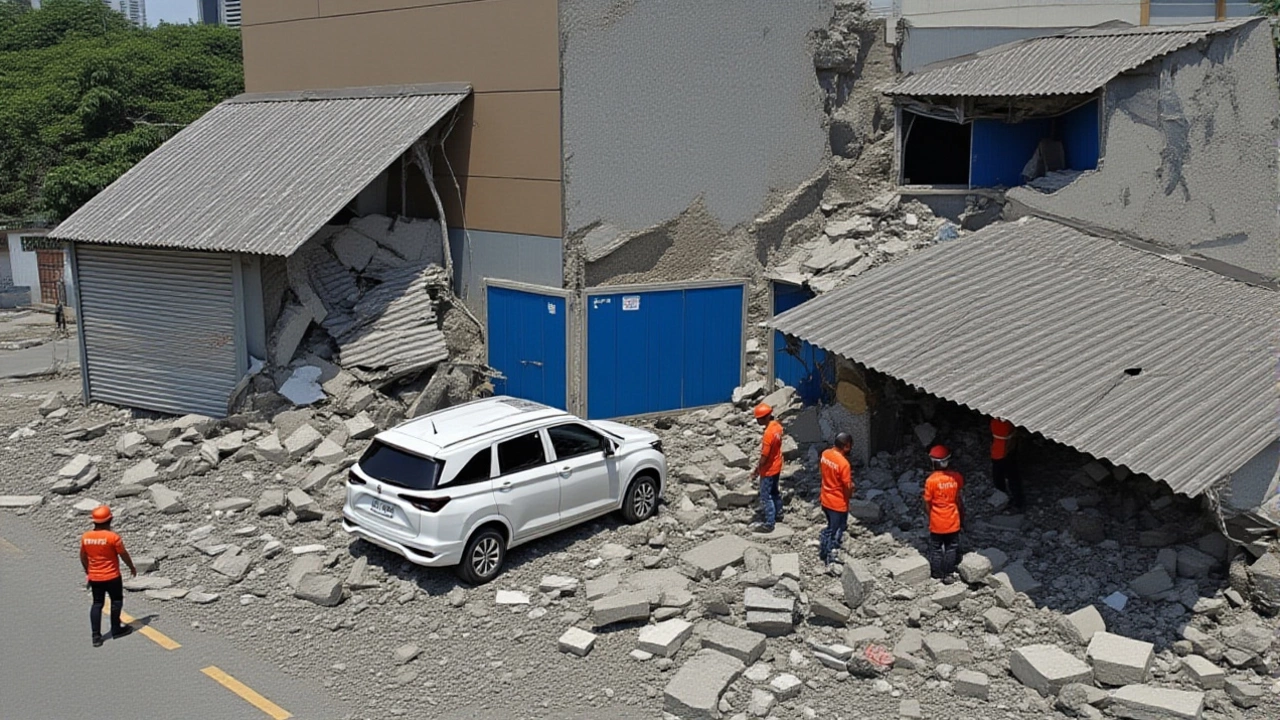When Dr. Renato Solidum, director of Philippine Institute of Volcanology and Seismology, confirmed a 7.6‑magnitude earthquakeDavao Oriental struck on Oct 8, 2025, at 14:23 PST, killing nine and injuring nearly 500 across the Davao and Caraga regions. The tremor’s epicenter was pinpointed 15 km northeast of Mati City, at a shallow depth of 30 km, according to the Philippine Institute of Volcanology and Seismology (PHIVOLCS).
Historical backdrop – why Mindanao shivers
Mindanao has a long, uneasy relationship with the Philippine Trench. The last major shock before this event was the 6.8‑magnitude quake on Dec 15, 2023, which claimed 12 lives and left over 250 injured. Even earlier, twin quakes on March 6 and March 8, 1992, rattled the same corridor, killing 222 people. "This is a doublet sequence," Dr. Renato Solidum explained during a joint briefing, "stress transferred from the 1992 events is still influencing fault behavior today."
The immediate toll – numbers, stories, and shattered streets
Casualties spanned five municipalities. In Davao City’s Agdao district, an 80‑year‑old man was crushed when a concrete wall collapsed. In Lupon, a 52‑year‑old construction worker, Juan Dela Cruz, suffered fatal head injuries at the public market. Mati City saw three deaths: retired teacher Maria Santos (68) and fisherman Roberto Lim (71) both suffered heart attacks triggered by the shaking, while municipal employee Antonio Gomez (45) was crushed by a wall at the City Hall annex.
In the mining village of Gumayan, Pantukan, a landslide buried the Lumanglas family – miner Benjamin Lumanglas (38), his wife Elena Lumanglas (34), and their 8‑year‑old son Miguel Lumanglas. Ten others, including 12‑year‑old Sarah Lumanglas, escaped with injuries.
Overall, the Department of Health reported 496 injured people, with the highest counts in Mati (142), Pantukan (87) and Davao City (76). Twenty‑eight patients remain in critical condition, according to regional director Dr. Lourdes Tan of the DOH.
Government response – emergency measures and declarations
Within hours, the National Disaster Risk Reduction and Management Council (NDRRMC) convened a briefing in Quezon City. Rex Gatchalian, secretary of the Department of Social Welfare and Development, announced that 28 houses were destroyed beyond repair, including 21 in Tarragona and one in Manay. He noted that each destroyed dwelling averaged 35 m², leaving families scrambling for shelter.
Provincial governors – Corazon Malanyaon of Davao Oriental, Edwin Jubahib of Davao de Oro and Marc Douglas Cagas of Davao del Sur – suspended classes and non‑essential work through Oct 11. Davao City Mayor Sebastian Duterte declared a state of calamity for 181 barangays, unlocking emergency funds.
Infrastructure took a hit: 322 m of the Pan‑Philippine Highway in Mati collapsed, power outages affected 214,000 households served by Davao Light and Power Company, and water contamination forced 89,000 residents of Davao Oriental to rely on tanked supplies.

Humanitarian aid – local and international help on the ground
The United Nations Office for the Coordination of Humanitarian Affairs (OCHA) activated its Flash Appeal, with Resident Coordinator Gustavo González confirming an initial $500,000 earmarked for emergency shelter kits and medical supplies. The World Bank’s Global Facility for Disaster Reduction and Recovery (GFDRR) pledged technical assistance for rapid infrastructure assessments.
On the local side, the Department of Education announced plans to resume limited classes in undamaged schools by Oct 14, aiming to get children back to learning routines while psychosocial support teams set up counseling corners in evacuation centers.
Looking ahead – assessment missions and long‑term resilience
The NDRRMC slated a damage‑assessment mission to Pantukan for Oct 10 at 09:00 PST, followed by a province‑wide survey of water, power and bridge integrity. Manuel Bonoan, secretary of the Department of Public Works and Highways, warned that repair costs could run into the billions if structural damage proves extensive.
Experts say the quake underscores the need for stricter building codes, especially in coastal and mining towns where ground‑motion amplification is high. "We must invest now in retrofitting schools and health facilities," urged Dr. Renato Solidum, adding that community drills can shave minutes off response times.
Frequently Asked Questions
How many people were displaced by the earthquake?
A total of 11,488 residents sought refuge in 12 government‑run evacuation centers across Davao and Caraga, according to DSWD Secretary Rex Gatchalian.
What caused the landslide in Pantukan?
Heavy shaking destabilized the slope above the gold‑mining village of Gumayan, triggering a rapid landslide that buried three members of the Lumanglas family and injured ten others.
Which agencies are leading the relief effort?
The NDRRMC coordinates overall response, with the DOH providing medical teams, DSWD managing shelters, and the DPWH overseeing infrastructure repair. International assistance comes from OCHA and the World Bank’s GFDRR.
When is school likely to reopen?
The Department of Education aims to resume limited classes in undamaged schools by Oct 14, 2025, after safety checks and psychosocial support are arranged.
What long‑term measures are being considered?
Experts advocate stricter building codes, retrofitting of public structures, and regular community earthquake drills to improve resilience against future tremors along the Philippine Trench.







Write a comment